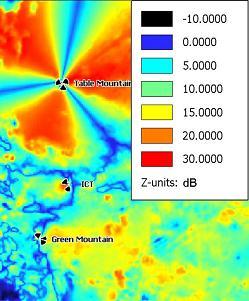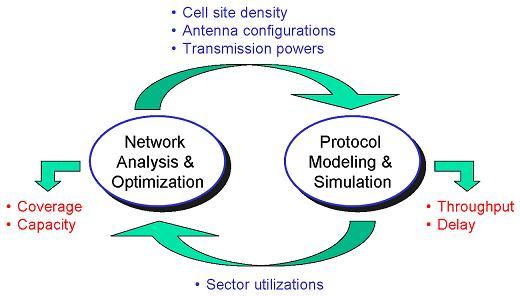Public Safety Broadband Network
Objective
To develop communications and network models for public safety broadband networks, and to analyze and optimize the performance of these networks.
Background
The FCC and the Administration have called for the deployment of a nationwide, interoperable public safety mobile broadband network. Public safety has been allocated broadband spectrum in the 700 MHz band for such a network. The National Public-Safety Telecommunications Council and the FCC have endorsed the 3GPP Long Term Evolution (LTE) standard as the technology of choice for this network.
Network Analysis and Optimization

The Wireless Networks Division(WND) performs RF network analysis and optimization of public safety broadband networks using commercially available and in-house customized network modeling and simulation tools. Current efforts are focused on wide area networks based on LTE technology.
Network analyses can be used to predict wide area performance metrics over a defined geographic area, such as the uplink and downlink:
- Signal-to-interference-and-noise ratio,
- Coverage probability, and
- Achievable data rate.
The tools can also be used to optimize network configurations (e.g., sector antenna directions, transmission powers) for various optimization criteria (e.g., maximum coverage area).
Protocol Modeling and Simulation
WND also develops and customizes protocol-level models of wireless technologies such as LTE. These models can be used to perform more detailed simulations of an incident area communication scenario. They include models of the application traffic (e.g., push-to-talk voice, video streams, file transfers), lower layer communication protocols, and the RF channel environment. Performance metrics generated by these models include
- Achieved throughput
- Communication delay
- Packet loss rate
- Network utilization
Protocol models complement the wide area network analysis and optimization tools described above to provide a more complete picture of the expected public safety communication performance. Using the cell sizes, antenna configurations, and transmission powers obtained from a network optimization, the protocol-level analysis generates realistic sector loads which can be fed back to the network analysis and optimization tools for further refinement of the optimized configuration.

Channel Measurements
The fidelity of the predictions generated by the network and protocol models is dependent in large part on the accuracy of the underlying RF channel propagation model. WND collects and analyzes channel measurements that are used to develop and tune RF propagation models. Of particular relevance to the Public Safety Broadband Network, these efforts include measurements in the 700 MHz public safety band.
Contacts
Wireless Networks Division
-
(301) 975-4190

